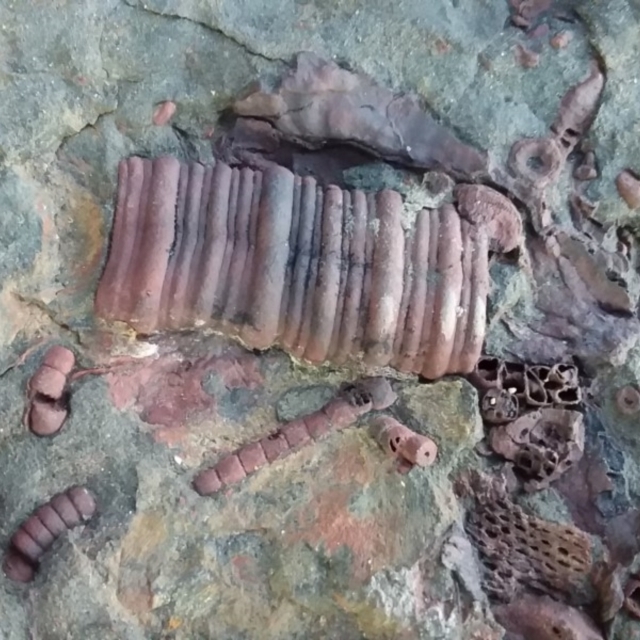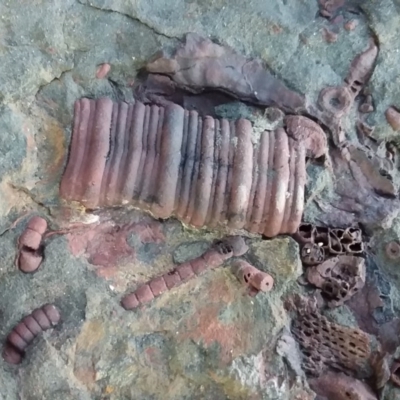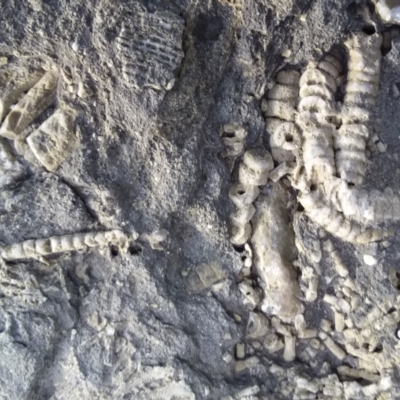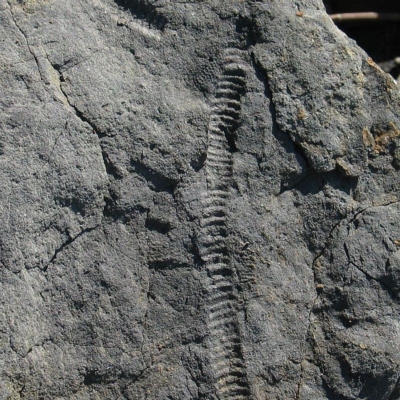Crinoidea (Crinoid or Sea Lily)
Crinoids are sedentary relatives of the starfish and sea urchin. Although they are commonly called “sea lilies”, they are actually animals which anchor themselves to the sea floor. Each animal has a long articulated stem made up of a stack of discoidal plates. At the top of the stem is a cup usually with five arms to waft water-borne food particles into the animal’s mouth. Large groups of Crinoids living together on the sea floor waving their arms about in the ocean currents to feed must have resembled a flower garden. Since the animal’s hard parts are only held together by soft tissue, they generally disintegrated on death. It is not surprising, therefore, that on local rock platforms sections of stems or even individual plates are the most common types of Crinoid fossil.
Most Crinoid species died out at the end of the Permian Period and the group almost became extinct. The species that survive on sea floors to-day are well adapted to their sedentary existence and are almost indistinguishable from the ancient ones which can be found here as fossils.
Crinoidea is listed in the following regions:
Species information
- Crinoidea Scientific name
- Crinoid or Sea Lily Common name
- Not Sensitive
- Cosmopolitan
- Non-invasive or negligible
- Machine learning






